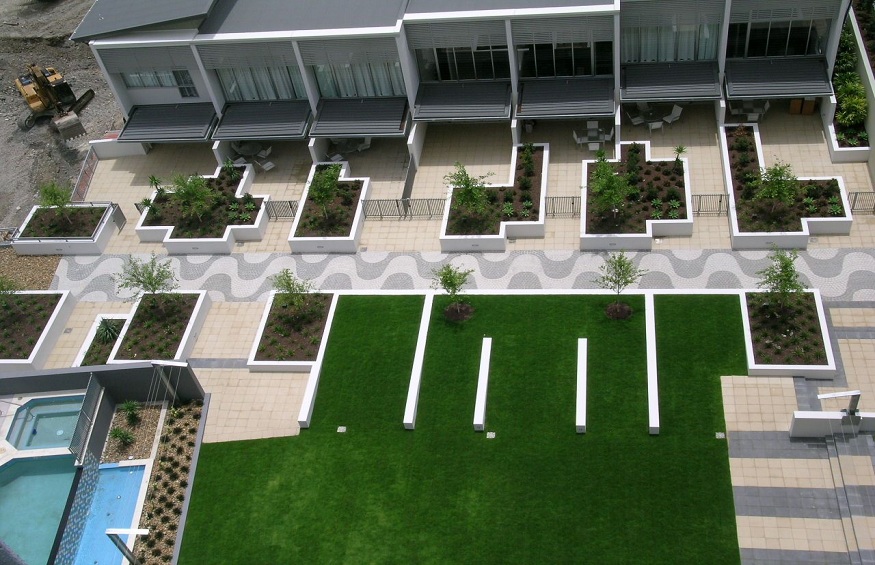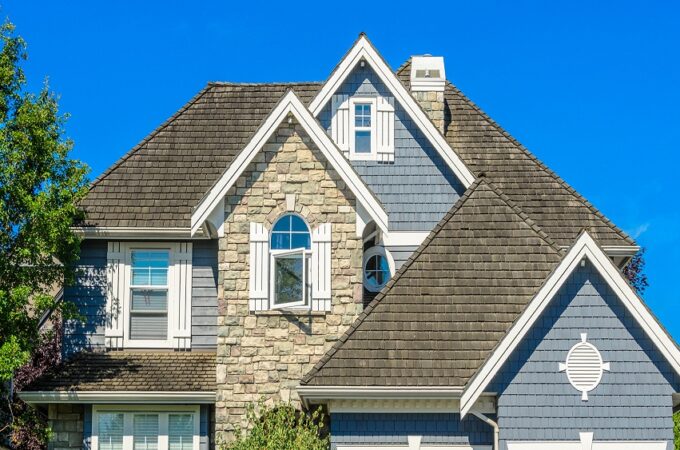
Building a Greener World: How Commercial Landscape Design is Embracing Sustainability
Commercial landscape design plays a crucial role in shaping our urban environment. It not only enhances the aesthetic appeal of our cities and towns but also has a significant impact on the health and well-being of its inhabitants. In recent years, there has been a growing recognition of the importance of embracing sustainability in commercial landscape design. This shift towards sustainable practices is driven by the need to protect the environment, conserve resources, and create healthier, more vibrant spaces for people to live and work in.
One of the key reasons why sustainable commercial landscape design is essential is its positive impact on the environment. Traditional landscape design often relies on the use of non-renewable materials, excessive water consumption, and energy-intensive maintenance practices. However, by adopting sustainable approaches, such as using locally sourced and recycled materials, implementing water-efficient irrigation systems, and utilising renewable energy options, we can significantly reduce our carbon footprint and mitigate the negative effects of landscape design on the planet.
Moreover, sustainable commercial landscape design also contributes to the overall well-being and health of the community. Green spaces have been proven to have a positive impact on mental health, reducing stress levels and increasing productivity. By incorporating elements such as green roofs, vertical gardens, and native plants, commercial landscapes can provide a sanctuary for people, promoting relaxation, social interaction, and a connection with nature. These sustainable design practices create a healthier and more enjoyable environment for employees, customers, and the wider community.
Benefits of Embracing Sustainability in Commercial Landscape Design
Embracing sustainability in commercial landscape design offers numerous benefits, both for the environment and the business itself. Firstly, sustainable design practices can help businesses save money in the long run. By implementing water conservation techniques, such as rainwater harvesting and water-efficient irrigation systems, businesses can significantly reduce their water consumption and lower their utility bills. Similarly, by incorporating energy-efficient lighting and renewable energy options, businesses can reduce their energy consumption and decrease their reliance on fossil fuels, leading to substantial cost savings.
Secondly, sustainable commercial landscape design can enhance the brand image and reputation of a business. In today’s environmentally conscious society, consumers are increasingly demanding sustainable and eco-friendly products and services. By adopting sustainable practices in their landscape design, businesses can position themselves as responsible corporate citizens and attract a wider customer base. A well-designed sustainable landscape can serve as a marketing tool, communicating the values and commitment of the business towards environmental stewardship and sustainability.
Furthermore, embracing sustainability in commercial landscape design can create a positive work environment and improve employee satisfaction. Green spaces have been proven to reduce stress, boost morale, and increase productivity. By providing employees with access to well-designed outdoor areas, businesses can enhance the overall well-being and job satisfaction of their workforce. Additionally, sustainable landscapes can attract and retain top talent, as employees are increasingly seeking employers who prioritise sustainability and environmental responsibility.
Sustainable Materials and Practices in Commercial Landscape Design
A crucial aspect of sustainable commercial landscape design is the use of environmentally friendly materials and practices. Sustainable materials are those that are renewable, recyclable, and have a low impact on the environment. For example, using locally sourced materials reduces the carbon footprint associated with transportation and supports the local economy. Recycled materials, such as reclaimed wood or recycled plastic, offer an eco-friendly alternative to traditional construction materials. Additionally, the use of permeable paving materials allows rainwater to infiltrate the soil, reducing the strain on stormwater systems and preventing water pollution.
In addition to using sustainable materials, implementing sustainable practices is equally important in commercial landscape design. Water conservation techniques, such as the use of drip irrigation systems and smart controllers, can significantly reduce water consumption while still maintaining healthy landscapes. Furthermore, incorporating sustainable maintenance practices, such as organic fertilisers and integrated pest management, minimises the use of harmful chemicals and promotes a healthier ecosystem. By adopting these sustainable materials and practices, commercial landscape design can have a positive impact on the environment and contribute to a greener world.
Incorporating Native Plants and Biodiversity in Commercial Landscape Design
One of the key principles of sustainable commercial landscape design is the incorporation of native plants and the promotion of biodiversity. Native plants are adapted to the local climate and require less water, fertilizers, and pesticides compared to non-native species. They also provide habitat and food sources for local wildlife, contributing to the overall ecological balance. By incorporating native plants into commercial landscapes, businesses can create resilient and low-maintenance environments that support biodiversity and reduce the need for chemical inputs.
Moreover, commercial landscapes can serve as valuable habitats for pollinators such as bees and butterflies. By planting a diverse range of flowering plants and providing nesting sites, businesses can support pollinator populations, enhance ecosystem services, and contribute to the conservation of these vital species. This not only benefits the environment but also enhances the beauty and vibrancy of commercial landscapes, attracting visitors and creating a positive impression.
Incorporating native plants and promoting biodiversity in commercial landscape design requires careful planning and consideration of the local ecosystem. Working with landscape architects and ecologists can ensure that the design is ecologically sound and maximises the benefits for both the business and the environment. By embracing native plants and biodiversity, commercial landscapes can become vibrant, sustainable, and resilient ecosystems that contribute to a greener world.
Water Conservation and Irrigation Techniques in Commercial Landscape Design
Water scarcity and the need for efficient water management are pressing global issues. Commercial landscape design plays a significant role in water conservation by implementing innovative irrigation techniques and strategies. By reducing water consumption and minimising runoff, businesses can contribute to water conservation efforts and create more sustainable landscapes.
One of the most effective water conservation techniques in commercial landscape design is the use of drip irrigation systems. Unlike traditional sprinkler systems, drip irrigation delivers water directly to the plant’s roots, minimising evaporation and ensuring efficient water use. Additionally, the use of smart irrigation controllers that adjust watering schedules based on weather conditions and soil moisture levels can further optimise water usage and prevent overwatering.
Another important aspect of water conservation in commercial landscape design is the incorporation of rainwater harvesting systems. These systems capture and store rainwater for later use in irrigation. By utilising rainwater, businesses can reduce their reliance on municipal water supplies and conserve valuable resources. Rain gardens, which are designed to capture and filter stormwater runoff, are another innovative approach to water conservation in commercial landscapes. These gardens not only reduce water pollution but also provide habitat for wildlife and create visually appealing features.
By implementing these water conservation techniques, commercial landscape design can significantly reduce water consumption, lower water bills, and contribute to the overall sustainability of the environment.
Energy-Efficient Lighting and Renewable Energy Options in Commercial Landscape Design
Energy-efficient lighting and renewable energy options are key elements of sustainable commercial landscape design. Traditional lighting systems, such as high-intensity discharge lamps, consume large amounts of energy and contribute to light pollution. However, by switching to energy-efficient lighting technologies, such as light-emitting diodes (LEDs), businesses can significantly reduce their energy consumption and carbon footprint.
LED lighting offers numerous advantages over traditional lighting systems. LEDs are highly energy-efficient, converting a greater percentage of energy into light and producing less heat. They also have a longer lifespan, reducing maintenance costs and waste. Additionally, LEDs can be easily controlled and dimmed, allowing for greater flexibility in lighting design.
In addition to energy-efficient lighting, commercial landscape design can incorporate renewable energy options to further reduce environmental impact. Solar panels can be installed to generate clean, renewable energy to power lighting, irrigation systems, and other electrical components. This not only reduces reliance on fossil fuels but also provides businesses with the opportunity to generate their own electricity and potentially save on energy costs in the long run.
By adopting energy-efficient lighting and utilising renewable energy options, commercial landscape design can contribute to a more sustainable future by reducing energy consumption, lowering greenhouse gas emissions, and promoting the use of clean, renewable energy sources.
Green Roofs and Vertical Gardens in Commercial Landscape Design
Green roofs and vertical gardens are innovative and visually striking elements of sustainable commercial landscape design. These features not only enhance the aesthetic appeal of buildings but also offer numerous environmental benefits.
Green roofs are vegetated roof systems that provide insulation, reduce stormwater runoff, and mitigate the urban heat island effect. By covering rooftops with vegetation, green roofs can significantly reduce energy consumption by providing natural insulation, reducing the need for heating and cooling. They also absorb and filter rainwater, reducing the strain on stormwater systems and preventing water pollution. Additionally, green roofs create habitats for birds, insects, and other urban wildlife, contributing to biodiversity in urban areas.
Vertical gardens, also known as living walls, are another innovative approach to sustainable commercial landscape design. These gardens involve the installation of vegetation on vertical surfaces, such as walls or fences. Vertical gardens not only provide aesthetic value but also offer numerous environmental benefits. They improve air quality by filtering pollutants, reducing noise pollution, and providing insulation, thereby reducing energy consumption. Furthermore, vertical gardens can help regulate indoor temperatures, improve indoor air quality, and create a calming and biophilic environment.
By incorporating green roofs and vertical gardens into commercial landscape design, businesses can enhance the sustainability and environmental performance of their buildings, while also creating visually stunning and biophilic spaces.
Case Studies of Successful Sustainable Commercial Landscape Design Projects
To illustrate the real-world impact of sustainable commercial landscape design, let’s explore some case studies of successful projects that have embraced sustainability principles.
- The Salesforce Tower in San Francisco, California, is a prime example of sustainable commercial landscape design. The tower features a 5.4-acre rooftop park, complete with native plants, walking paths, and seating areas. The park not only provides a beautiful space for employees and visitors but also helps reduce the building’s energy consumption, improve air quality, and manage stormwater runoff.
- The Sidwell Friends School in Washington, D.C., has implemented sustainable landscape design practices throughout its campus. The school incorporates native plants, green roofs, and rain gardens to promote biodiversity and manage stormwater. The landscape design also includes outdoor classrooms and nature play areas, enhancing the learning experience for students and fostering a connection with nature.
- The Bullitt Center in Seattle, Washington, is renowned for its commitment to sustainability. The building features extensive green roofs, photovoltaic panels for renewable energy generation, and rainwater harvesting systems. The landscape design incorporates native plants and permeable paving materials, contributing to water conservation efforts and creating a vibrant, sustainable environment.
These case studies highlight the immense potential of sustainable commercial landscape design to create beautiful, functional, and environmentally friendly spaces that benefit both people and the planet.
The Role of Green Certifications and Standards in Commercial Landscape Design
Green certifications and standards play a significant role in promoting and recognising sustainable commercial landscape design. These certifications provide businesses with guidelines and benchmarks to follow, ensuring that their landscape projects meet specific environmental, social, and economic criteria.
One such certification is the Leadership in Energy and Environmental Design (LEED) certification. Developed by the U.S. Green Building Council, LEED provides a framework for designing, constructing, and operating green buildings and landscapes. LEED-certified projects undergo a rigorous evaluation process and must meet various criteria, including water efficiency, energy performance, materials selection, and innovation in design.
Another important certification is the Sustainable Sites Initiative (SITES). SITES is a comprehensive rating system for sustainable landscape design, construction, and maintenance. It evaluates projects based on their performance in areas such as site selection, water conservation, soil management, and human health and well-being. SITES-certified projects demonstrate a commitment to environmental stewardship, biodiversity, and resource efficiency.
Additionally, there are various regional and international green certifications and standards that businesses can pursue to demonstrate their commitment to sustainable commercial landscape design. These certifications not only provide recognition for their efforts but also serve as a marketing tool, attracting environmentally conscious clients and customers.
By adhering to green certifications and standards, businesses can ensure that their commercial landscape designs meet the highest sustainability criteria and contribute to a greener world.
Conclusion: The Future of Sustainable Commercial Landscape Design
As we strive towards a greener and more sustainable future, commercial landscape design has a vital role to play. Embracing sustainability in commercial landscape design offers numerous benefits, ranging from environmental conservation to improved well-being and cost savings. By incorporating sustainable materials and practices, native plants and biodiversity, water conservation techniques, energy-efficient lighting, renewable energy options, and innovative features such as green roofs and vertical gardens, businesses can create vibrant, resilient, and eco-friendly landscapes.
Case studies of successful sustainable commercial landscape design projects demonstrate the real-world impact of these principles, showcasing the potential for creating beautiful, functional, and environmentally friendly spaces.
Moreover, green certifications and standards provide a framework for businesses to follow, ensuring that their landscape designs meet specific sustainability criteria and contribute to a greener world. By pursuing these certifications, businesses can not only demonstrate their commitment to sustainability but also attract environmentally conscious customers and clients.
The future of commercial landscape design lies in embracing sustainability and creating spaces that are not only visually appealing but also environmentally responsible. By prioritising sustainability, businesses can contribute to a greener world and create a positive impact on the environment and the communities they serve.





